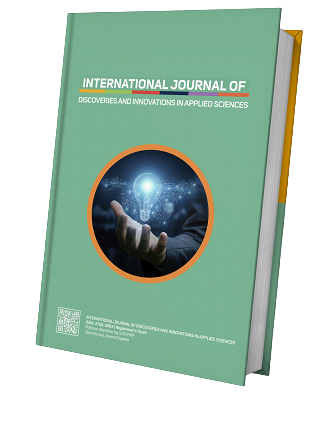Testing The Performance of a Solar Heater Using Convex Lenses as a Means of Concentrating Solar Radiation
Keywords:
Solar Heater, Convex Lens, Solar Radiation, Heat Gain, Renewable Energy, Passive Solar ConcentrationAbstract
Enhancing the efficiency of solar water heaters remains a priority in renewable energy research, particularly in increasing thermal gain and water temperature. Despite advancements in solar heater design, a knowledge gap exists in optimizing heat absorption using passive optical components. This experimental study investigates the impact of integrating convex lenses into flat-plate solar heaters to concentrate solar radiation. Two identical solar heaters were constructed—one with convex lenses fixed between double glass plates and one without lenses. Both units were tested under identical conditions over three days in December 2024 in Shatrah, Iraq. The results revealed that the lens-equipped heater showed a slight increase in heat gain, particularly during early sunlight hours. However, at midday, performance equalized due to lens-induced shading effects. The findings suggest that while convex lenses can modestly improve early-day heating efficiency, design modifications are needed to mitigate their shading drawback for optimal all-day performance.
References
[1] J. Fan, L. Shah, and S. Furbo, "Flow distribution in a solar collector panel with horizontally inclined absorber strips," Solar Energy, vol. 81, pp. 1501–1511, 2007.
[2] C. Ho and T. Chen, "Collector efficiency improvement of recycle double-pass sheet-and-tube solar water heaters with internal fins attached," Renewable Energy, vol. 33, pp. 655–664, 2008.
[3] J. Fan, L. Shah, and S. Furbo, "Flow distribution in a solar collector panel with horizontally inclined absorber strips," Solar Energy, vol. 81, pp. 1501–1511, 2007.
[4] C. Marken, "Solar collectors – behind the glass," Homepower Magazine, vol. 133, pp. 70–76, 2009.
[5] J. Gulland, "Heating water with a wood stove," Wood Heat Organization Inc., Available: [Online]. Available: https://www.woodheat.org. [Accessed: Mar. 29, 2012].
[6] C. Ho and T. Chen, "Collector efficiency improvement of recycle double-pass sheet-and-tube solar water heaters with internal fins attached," Renewable Energy, vol. 33, pp. 655–664, 2008.
[7] K. Mankhi, N. H. N. Al-Hashimi, and J. M. Al-Asadi, "New laboratories design of solar collectors suitable for Basrah City 30.50 N," IOSR Journal of Engineering (IOSRJEN), vol. 4, no. 12, pp. 15–19, 2014.
[8] REN21, "Renewables 2011: Global Status Report," pp. 17–18, 2011.
[9] S. A. Kalogirou, "Solar thermal collectors and applications," Progress in Energy and Combustion Science, vol. 30, no. 3, pp. 231–295, 2004. doi: 10.1016/j.pecs.2004.02.001.
[10] Y. Tripanagnostopoulos, "Aspects and improvements of hybrid photovoltaic/thermal solar energy systems," Solar Energy, vol. 81, no. 9, pp. 1117–1131, 2007. doi: 10.1016/j.solener.2007.04.003.
[11] A. Rabl, Active Solar Collectors and Their Applications. Oxford, UK: Oxford University Press, 1985.
[12] G. N. Tiwari and S. Dubey, Fundamentals of Photovoltaic Modules and Their Applications. Cambridge, UK: Royal Society of Chemistry, 2009.
[13] B. Norton, P. C. Eames, T. K. Mallick, M. J. Huang, S. J. McCormack, J. D. Mondol, and Y. G. Yohanis, "Enhancing the performance of building integrated photovoltaics," Solar Energy, vol. 85, no. 8, pp. 1629–1664, 2011. doi: 10.1016/j.solener.2009.10.004.
[14] J. A. Duffie and W. A. Beckman, Solar Engineering of Thermal Processes, 4th ed. Hoboken, NJ, USA: Wiley, 2013.
[15] A. A. Hegazy, "Comparative study of the performances of four photovoltaic/thermal solar air collectors," Energy Conversion and Management, vol. 41, no. 8, pp. 861–881, 2000. doi: 10.1016/S0196-8904(99)00132-0.
Downloads
Published
How to Cite
Issue
Section
License
Copyright (c) 2025 Kawthar Kazem Mankhi

This work is licensed under a Creative Commons Attribution 4.0 International License.




